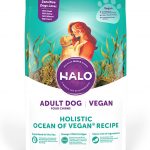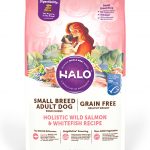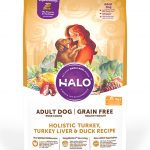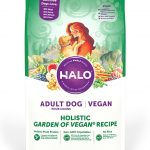The start of a new year is typically a time where we reflect on things we’d like to change or goals we’d like to achieve. Now is also a great time to assess our fur babies needs and how we can ensure they live a long, healthy life. An important aspect to your pup’s health is their weight. Has your dog put on a few extra pounds that he or she needs to lose? They’re not alone! Pet obesity is considered an epidemic, with over half (!!) of the dogs in the USA overweight as of 2018.
Here are a few tips and tricks to help your pet stay in a healthy body condition all year long:
- It’s Not Always About Food
When your furry friend rests their head on your lap and stares soulfully up into your eyes—he or she isn’t necessarily seeking food, your pet is seeking a rewarding interaction. Instead of a cookie, give them attention and affection, a tug with a toy, throw a ball, or even go for a little walk—whatever your schedule, lifestyle, and your pet’s health and desires allow.
- Low-Cal Options
Of course, sometimes it really is a treat they’re after. When that’s the case, try a low-calorie option. Fruits and vegetables make great treats for dogs—green beans, cherry tomatoes, cubed pumpkin, sliced cucumber, you name it. They are high in water content, making the calories very diluted, and are often packed with fiber that provides bulk. You can try freezing carrots to make pup-sicles, or blending vegetables with water to make a healthy smoothie. Try filling hollow toys with the smoothie and freeze for a long-lasting, yet satisfying low calorie snack.
- Puzzles & Toys
Like the smoothie-filled toy idea above, lots of ways exist to make treats and meal times more interactive and longer-lasting, which may reduce begging behavior. Ditch the bowl and try feeding their daily food allowance as a training treat. Getting them to ‘work’ for their food will increase satisfaction and is a boon to training and fostering that human-animal bond.
But what about our furry friends who have already put on a few pounds? A few tricks are out there that help to get the weight off. Bear in mind that if your pet is more than 10% overweight, a more strict regime is required and you’ll need to coordinate a plan with your family veterinarian.
- Don’t Overfeed
What exactly constitutes overfeeding? If you’re following the instructions on the package but your pet is gaining weight, that’s overfeeding. The feeding recommendations on bags are geared toward pets who need the most calories to maintain their weight. Pets, like people, are individuals, and there’s no one-size-fits-all recommendation for food; some may require more than the standard recommendation and some may require less. You probably have a friend who only has to read a label to gain weight and you probably have a friend who can eat anything and stay thin. Pets are no different. We can make general recommendations for the average dog, but your dog might not be average. The following table offers guidelines for typical energy requirements for dogs of a variety of sizes:
| Dog Weight | Daily Caloric Requirement |
| 10lb / 4.5kg | 260 – 390 kcal |
| 20lb / 9kg | 435 – 650 kcal |
| 30lb / 13.5kg | 590 – 890 kcal |
| 40lb / 18kg | 730 – 1100 kcal |
| 50lb / 22.5kg | 865 – 1300 kcal |
| 60lb / 27kg | 990 – 1500 kcal |
| 70lb / 32kg | 1130 – 1700 kcal |
For a recommended caloric requirement specifically for your dog, speak with your veterinarian.
- Exercise
If you’ve ever tried losing weight you know it is frustrating. The pounds don’t just melt off, and they can come back very easily. To help our furry friends get back in shape, once you’ve reduced their calorie intake down to their appropriate intake (but no lower!), you can increase their exercise to burn off stored energy, a.k.a. fat. Unless we’re using a veterinary therapeutic weight loss diet, we don’t want to restrict their intake below meeting their maintenance requirement, as we don’t want to risk restricting essential nutrients. We can provide their essential nutrients by feeding them their maintenance requirement, but increase their energy expenditure to burn off those calories. This approach is appropriate for dogs who are minimally overweight, have a 6 out of 9 body condition score, and have no underlying issues (like arthritis or an injury). If you have concerns about increasing exercise, speak with your veterinarian. Many low-impact exercises exist that can be used to support weight loss with guidance from veterinary physiotherapists.
- A Weight Management Diet
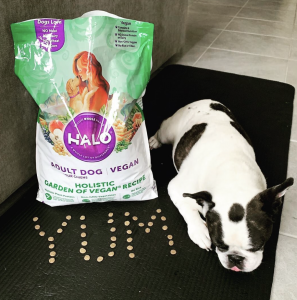
While weight management foods aren’t designed for caloric restriction, they are helpful to prevent weight gain in obese-prone dogs. For example, Halo’s Adult Dog Holistic Healthy Weight and Adult Dog Holistic Garden of Vegan have diluted calories, reduced fat, and are higher in fiber. These foods are designed to provide dogs with all the nutrients they require and help them feel fuller for longer. They are great options for dogs who have been previously overweight and are at risk of gaining weight again; also works for at-risk breeds.
Best wishes and tail wags,
Dr. Sarah Dodd


